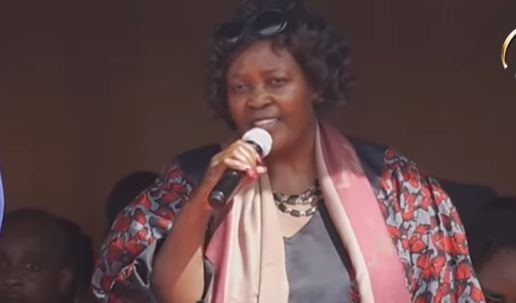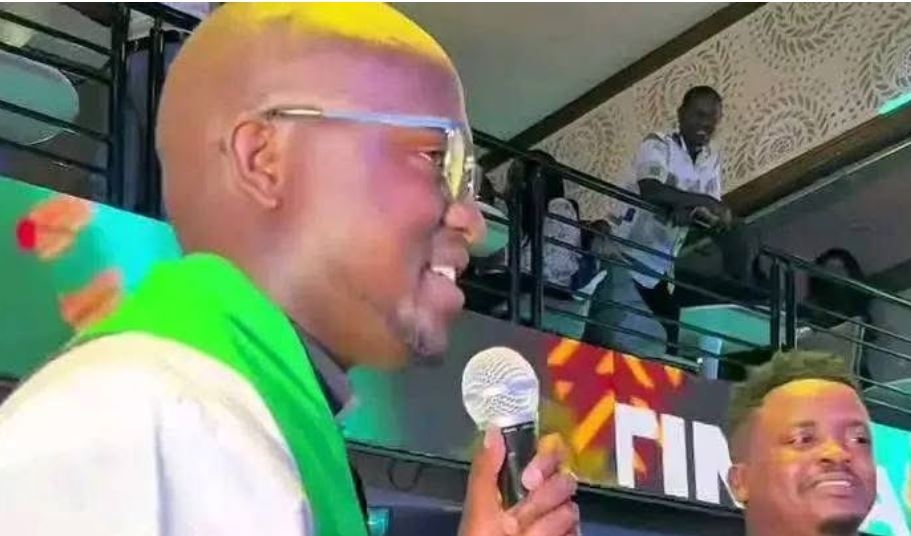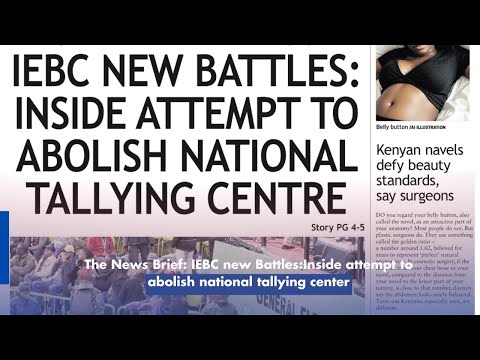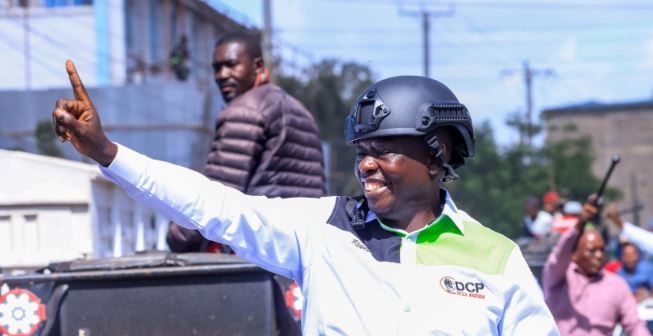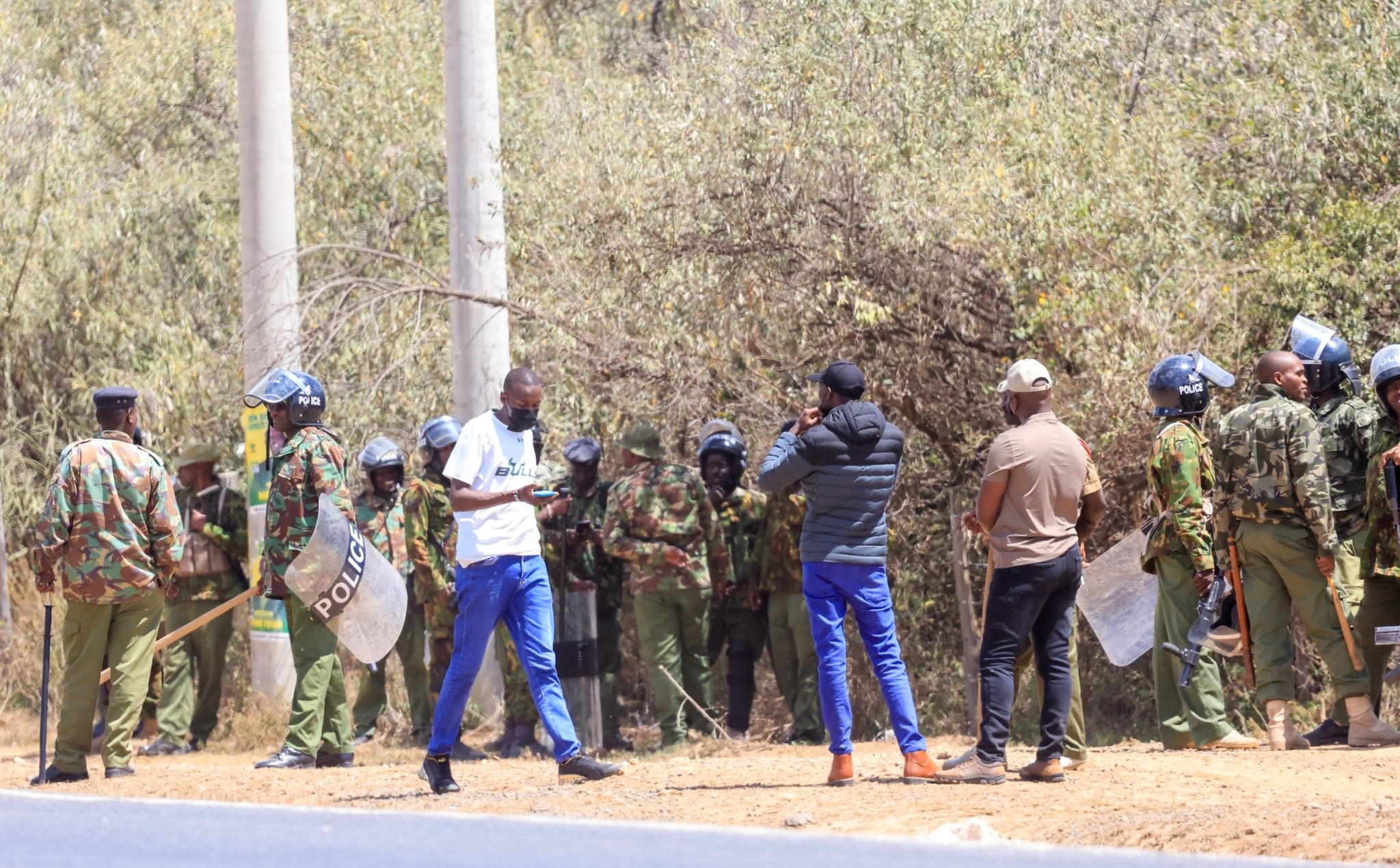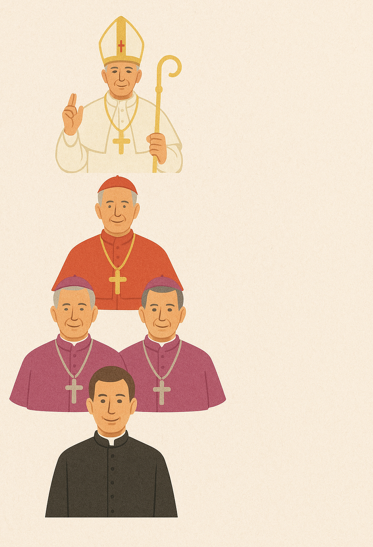
Hierarchy of the Catholic Church /AI
The hierarchy of the Catholic Church consists of its bishops, priests, and deacons.
In the ecclesiological sense of the term, "hierarchy" strictly means the "holy ordering" of the Church, the Body of Christ, so as to respect the diversity of gifts and ministries necessary for genuine unity.
In canonical and general usage, it refers to those who exercise authority within a Christian Church.
In the Catholic Church, authority rests chiefly with bishops, while priests and deacons serve as their assistants, co-workers, or helpers.
Accordingly, "hierarchy of the Catholic Church" is also used to refer to the bishops alone.
The term "pope" was still used loosely until the sixth century, being at times assumed by other bishops.
The term "hierarchy" became popular only in the sixth century due to the writings of Pseudo-Dionysius.
As of 31 December 2020, the Catholic Church consisted of 2,903 dioceses or equivalent jurisdictions, each overseen by a bishop.
Dioceses are divided into individual communities called parishes, each staffed by one or more priests, deacons, or lay ecclesial ministers. Ordinarily, care of a parish is entrusted to a priest, though there are exceptions.
Approximately 19.3 per cent of all parishes do not have a resident pastor, and 1,948 parishes worldwide are entrusted to a deacon or lay ecclesial minister.
All clergy, including deacons, priests, and bishops, may preach, teach, baptise, witness marriages, and conduct funeral liturgies.
Only priests and bishops can celebrate the sacraments of the Eucharist (though others may be ministers of Holy Communion), Penance (Reconciliation, Confession), Confirmation (priests may administer this sacrament with prior ecclesiastical approval), and Anointing of the Sick.
Only bishops can administer the sacrament of Holy Orders, by which men are ordained as bishops, priests, or deacons.
The Pope
He is the Bishop of Rome who, in that role, has primacy among all the bishops.
The College of Cardinals: The Pope selects the Cardinals, usually from the pool of bishops, although the only actual requirement is ordination.
Their only right and duty per se is to meet to elect a new Pope.
“Cardinal” is a title, not an office, and can be revoked by the Pope.
There are currently over 140 members in the College of Cardinals, but those older than 80 are not eligible to vote. The Pope may use them singly or collectively for consultation.
Some Cardinals have prominent roles in the Roman Curia.
The Roman Curia: Composed of the Secretariat of State and a variety of congregations and other offices created to assist the Pope in the administration of the Church.
In the Latin Church, there is ordinarily no intervening authority between the Pope and Diocesan Bishops.
Organisational Roles: Diocese
It is headed by a Bishop who is appointed according to current Canon Law.
Episcopal Vicars/Auxiliary Bishops: Granted authority by the Diocesan Bishop for governance of a part of the diocese or in a specific role, such as education.
Vicar General: Assists in the governance of the entire diocese.
Vicars or Deans: Parish pastors from a group of neighbouring parishes (a vicariate or deanery) within a region, considered “first among equals.”
Pastors: Either parochial vicars or assistant pastors.
The bishops, who possess the fullness of orders—and therefore the fullness of both priesthood and diaconate—are, as a body (the College of Bishops), considered the successors of the Apostles.
They are "constituted pastors in the Church, to be the teachers of doctrine, the priests of sacred worship, and the ministers of governance," and they represent the Church.
In 2012, there were 5,133 Catholic bishops; at the end of 2021, there were 5,340. The Pope himself is a bishop (the Bishop of Rome) and traditionally uses the title "Venerable Brother" when writing formally to another bishop.
Bishops of a country or region may form an episcopal conference and meet periodically to discuss current issues.
Decisions in certain fields, notably liturgy, fall within the exclusive competence of these conferences.
The decisions of the conferences are binding on individual bishops only if agreed to by at least two-thirds of the membership and confirmed by the Holy See.
Bishops are normally ordained to the episcopate by at least three other bishops, though for validity, only one is needed, and a mandatum from the Holy See is required.
Ordination to the episcopate is considered the completion of the sacrament of Holy Orders; even when a bishop retires from active service, he remains a bishop, since the ontological effect of Holy Orders is permanent.
On the other hand, titles such as archbishop or patriarch imply no ontological change, and existing bishops who rise to those offices do not require further ordination.
Each title had a salient function within the Roman Catholic Church.
There were checks and balances within the roles to ensure that the church would run smoothly. It should be noted that women were barred from all these titles.
Deacons: Servants to the Catholic Clergy
The word deacon is derived from the Greek word for "servant."
The deacon's role within the hierarchy of the Church was mainly liturgical and was seen as an apprenticeship to the priesthood.
This member of the Catholic clergy would assist with Baptisms, preaching, and other duties associated with Mass.
Deacons would serve as assistants to bishops, archbishops, and cardinals while studying to become priests.
In the Latin Church, married deacons are permanent deacons. In most dioceses, there is a cut-off age for being accepted into formation for the diaconate.
They may be seminarians preparing for ordination to the priesthood, "transitional deacons", or "permanent deacons" who do not intend to be ordained as priests.
To be ordained deacons, the latter must be at least 25 years old, if unmarried; if married, a prospective deacon must be at least 35 years old and have the consent of his wife.
Priests
All-Rounders of the Roman Catholic Church
Priests can perform sacraments in the congregation and were the heads of their local parishes, and were the closest to the people in an area; during this time, people were going to church 3 to 4 times daily.
The Church played a more central role in life during the middle ages than it does today.
Priests held masses, heard confessions, made announcements from the bishops and archbishops, and acted as mediators between the higher Catholic clergy and the congregation.
Priests would also teach in schools, both
religious and secular subjects. They would also act as scribes, copying
manuscripts and other documents for the Roman Catholic clergy.
Bishops are assisted by priests and deacons. All priests and deacons are incardinated in a diocese or religious order.
Parishes, whether territorial or person-based, within a diocese are normally in the charge of a priest, known as the parish priest or the pastor.
In the Latin Church, only celibate men, as a rule, are ordained as priests, while the Eastern Churches, again as a rule, ordain both celibate and married men.
Among the Eastern particular Churches, the Ethiopic Catholic Church ordains only celibate clergy, while also having married priests who were ordained in the Orthodox Church.
Other Eastern Catholic Churches, which do ordain married men, do not have married priests in certain countries.
The Western or Latin Church does sometimes, though rarely, ordain married men, usually Protestant clergy who have become Catholics.



